I am currently re-reading my old textbook Microelectronics by Millman and Grabel. Attached two pages. Here is a somewhat theoretical question on large signal parameters for the BJT.
Starting with Ebers-Moll equations (3-6) and (3-7) and assuming \$V_{CB} = 0\$ they easily derive the common-base forward short circuit current gain \$h_{FB}\$ which is defined as $$ h_{FB} \equiv \left. -\frac{I_C}{I_E} \right|_{V_{CB} = 0} $$ In \$h_{FB}\$ the F stands for FORWARD (normal use of transistor) and B for common-BASE. Short-circuit means that \$V_{CB} = 0\$, i.e. the collector is connected to common (base, as in this case) .
It is easy to see that \$h_{FB} = \alpha_F\$ as in equation (3-8). All good so far.
Then there is the common-emitter forward short-circuit current gain, \$h_{FE}\$ which is defined as $$ h_{FE} \equiv \left. -\frac{I_C}{I_B} \right|_{V_{CE} = 0} $$ i.e. the gain of collector current versus base current when the collector is grounded to the common emitter.
In (3-13) they define \$\beta_F = \frac{\alpha_F}{1-\alpha_F}\$ and then simply claim that \$h_{FE} = \beta_F\$. In other words, they claim that $$ h_{FE} = \frac{\alpha_F}{1-\alpha_F} $$
But when I do the math to derive \$h_{FE}\$ from Ebers-Moll, by using emitter as common and assuming \$V_{CE} = 0\$, I get $$ h_{FE} = -\frac{\alpha_F - \frac{\alpha_F}{\alpha_R}}{1 - \alpha_F + (1 -\alpha_R) \frac{\alpha_F}{\alpha_R}} \neq \frac{\alpha_F}{1-\alpha_F}. $$ What is right here? Can you derive \$h_{FE} = \beta_F\$?
Images from Microelectronics 2nd ed. by Jacob Millman & Arvin Grabel, McGraw-Hill 1987, pages 89 and 90.

